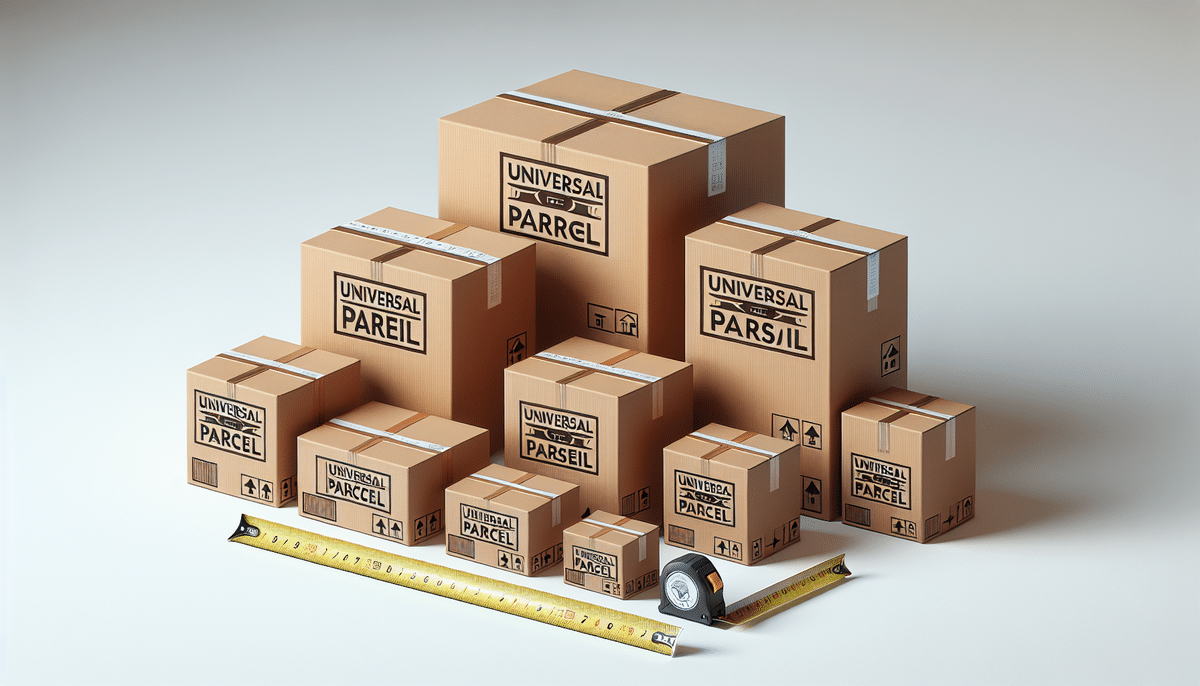Understanding UPS Box Sizes for Optimal Shipping
When it comes to shipping or mailing items, selecting the right UPS box is crucial for ensuring your items arrive safely and cost-effectively. UPS offers a variety of box sizes designed to accommodate different shipping needs. This guide explores the different sizes of UPS boxes, offers tips on choosing the right size, and provides insights into packing and cost considerations.
Importance of Choosing the Right UPS Box Size
Selecting the appropriate UPS box size is essential for several reasons:
- Protection: Ensures items are secure during transit, reducing the risk of damage.
- Cost-Efficiency: Smaller boxes typically cost less to ship than larger ones.
- Environmental Impact: Using the right size minimizes packaging waste.
According to the UPS Shipping Services, proper packaging can significantly impact the safety and cost of your shipment.
Overview of UPS Box Sizes
UPS boxes come in various sizes to accommodate different types of items. Here's a breakdown of the available sizes:
Small UPS Boxes
Ideal for lightweight and compact items such as books, CDs, or small electronics.
- Dimensions: Approximately 13 x 11 x 2 inches
- Capacity: Up to 10 lbs
- Uses: Sending gifts, promotional materials, or storing small items like jewelry.
Medium UPS Boxes
Suitable for slightly larger items, including clothing, shoes, and small kitchen appliances.
- Dimensions: Around 16 x 11 x 3 inches
- Capacity: Up to 20 lbs
- Uses: Shipping books, electronics, and household items.
Large UPS Boxes
Best for bulkier items such as computers, printers, and small TV screens.
- Dimensions: Approximately 18 x 13 x 3 inches
- Capacity: Up to 30 lbs
- Uses: Moving larger household items or shipping multiple smaller items together.
Extra-Large UPS Boxes
Designed for oversized items that require additional space and support.
- Dimensions: Around 24 x 18 x 18 inches
- Capacity: Up to 100 lbs
- Uses: Shipping bicycles, oversized electronics, or small furniture.
How to Select the Appropriate UPS Box Size
Choosing the right UPS box involves considering both the dimensions and weight of your items:
- Measure Your Items: Ensure the box accommodates the length, width, and height of your items with extra space for padding.
- Consider Weight: Heavier items may require a larger box to distribute weight evenly and prevent damage.
- Fragility: Delicate items need more protective packaging, which might necessitate a larger box with cushioning materials.
For detailed guidelines, refer to UPS's Packaging Information.
Packing Tips for UPS Boxes
Proper packing is essential to protect your items during transit. Here are some tips:
- Use Appropriate Materials: Utilize bubble wrap, packing peanuts, or foam inserts to cushion items.
- Seal Securely: Use strong packing tape to seal all openings and reinforce the box.
- Label Correctly: Clearly write the recipient’s address and your return address. Label fragile items if necessary.
- Distribute Weight Evenly: Ensure that weight is balanced to prevent the box from becoming misshapen.
For more packing techniques, visit the UPS Packaging Guide.
Cost Implications of Different UPS Box Sizes
The size of the UPS box you choose directly affects shipping costs. Generally, larger boxes incur higher shipping fees. However, it's essential to balance size with the number of shipments:
- Smaller Boxes: Lower shipping costs but may require multiple shipments for larger items.
- Larger Boxes: Higher shipping costs but can consolidate items, potentially saving money overall.
UPS provides a detailed Pricing Calculator to help estimate shipping costs based on box size and weight.
Where to Purchase UPS Boxes
UPS boxes are available through multiple channels:
- UPS Website: Purchase directly from the official UPS Shipping page.
- Retail Stores: Office supply stores like Staples or shipping centers such as The UPS Store carry UPS boxes.
- Online Retailers: Platforms like Amazon offer a variety of UPS box sizes.
Ensure you are buying genuine UPS boxes to guarantee quality and durability during shipping.
Common Mistakes and How to Avoid Them
Avoid these common pitfalls when selecting and using UPS boxes:
- Incorrect Sizing: Using boxes that are too small can damage items, while oversized boxes increase costs.
- Poor Packing: Inadequate cushioning can lead to item damage. Always use sufficient padding.
- Weak Sealing: Improperly sealed boxes may open during transit, resulting in lost or damaged items.
- Ignoring Weight Limits: Exceeding the box’s weight capacity can compromise its durability.
Innovations in UPS Packaging
UPS is continually innovating to enhance shipping efficiency and sustainability:
- Eco Responsible Packaging Program: Encourages the use of sustainable and recyclable packaging materials to reduce environmental impact.
- Smart Packaging: Utilizes technology to monitor and improve the safety and tracking of shipments.
- Modular Packaging Solutions: Offers customizable packaging options to fit various shipping needs more precisely.
Learn more about UPS's sustainability efforts on their Sustainability page.
Conclusion
Choosing the right UPS box size is vital for the safe and cost-effective shipping of your items. By understanding the different box sizes available, considering the nature and weight of your items, and following proper packing techniques, you can ensure successful deliveries. Additionally, staying informed about UPS’s latest packaging innovations can further optimize your shipping experience.






















